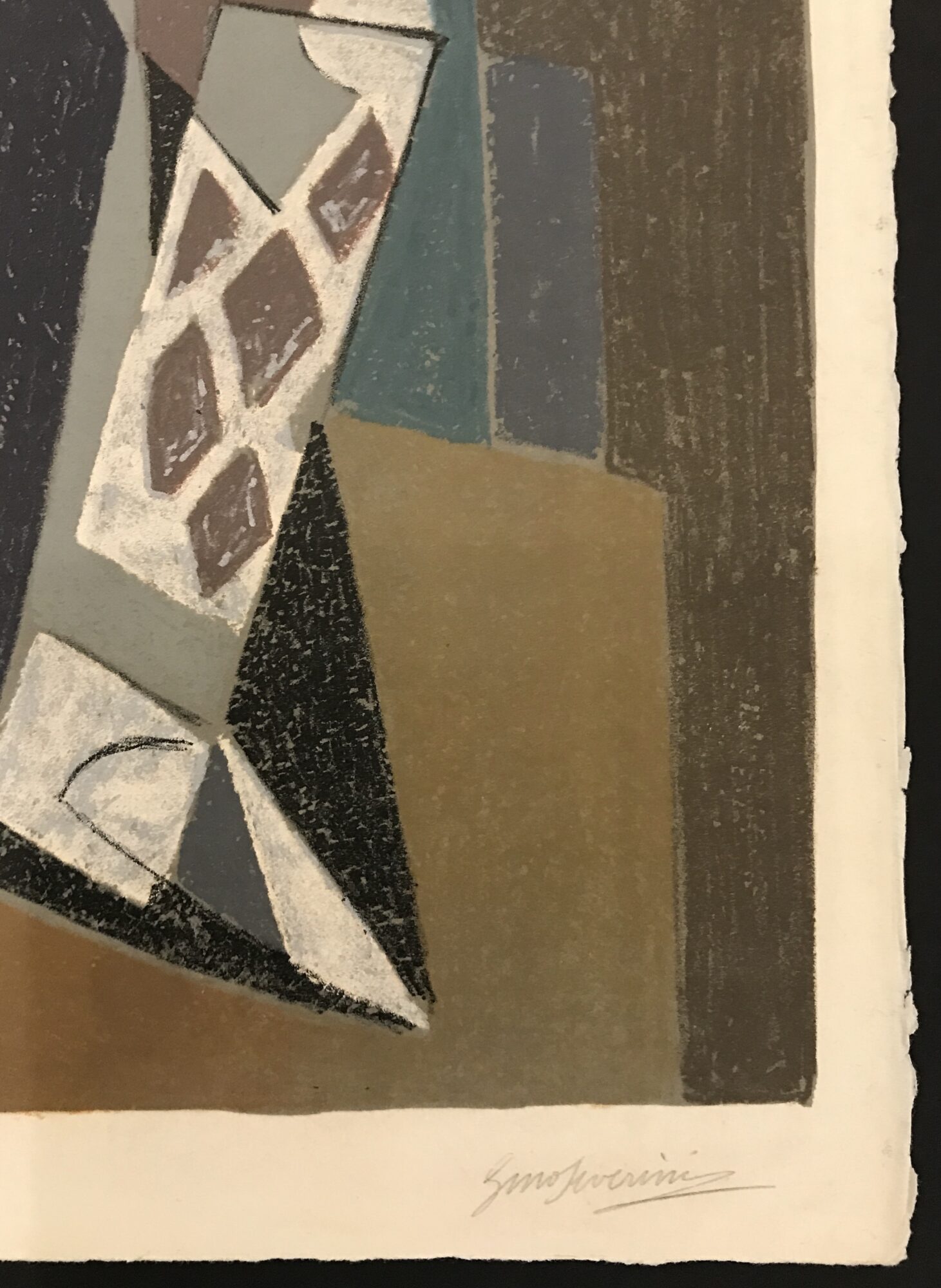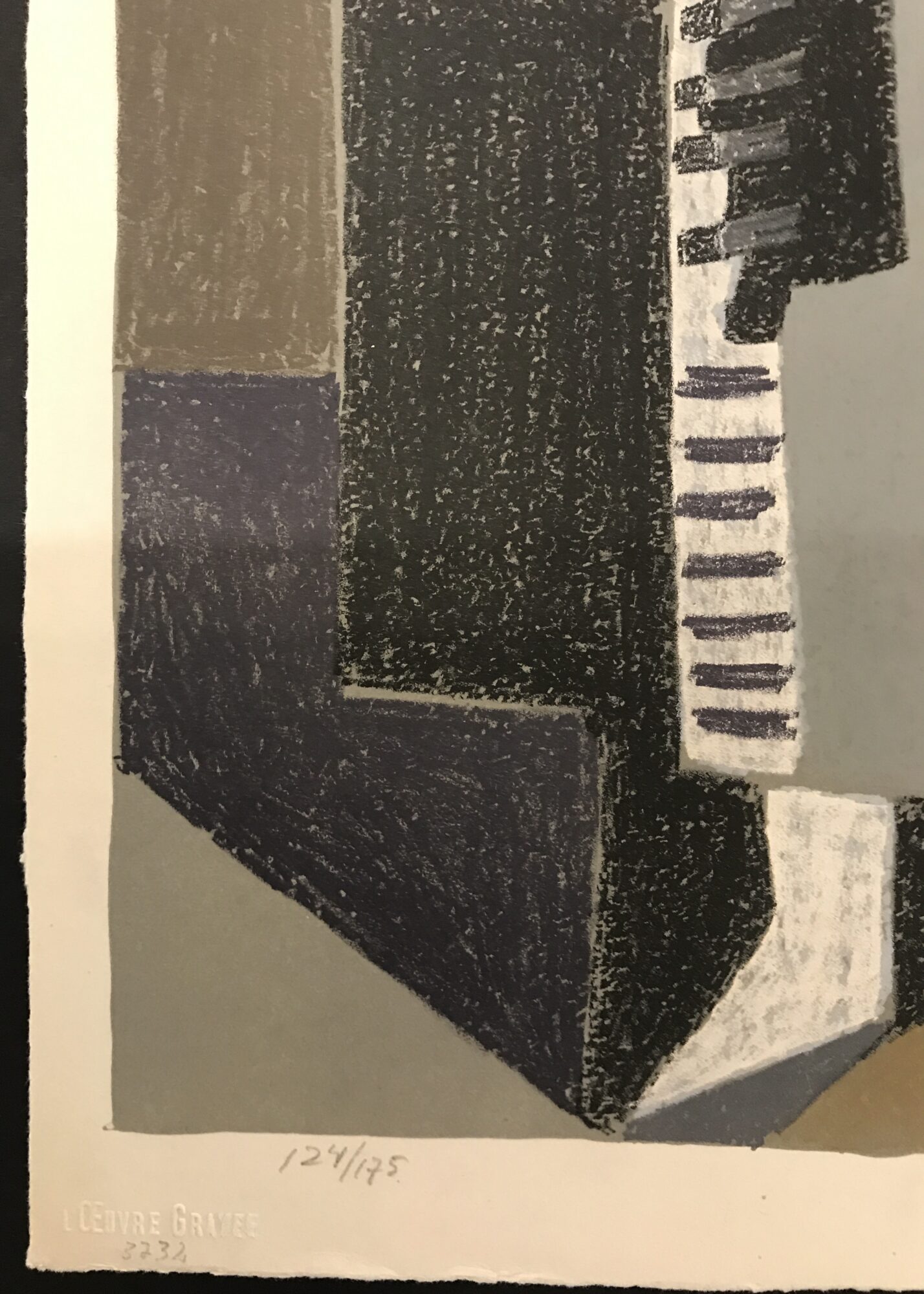Commedia dell’Arte
Commedia dell’Arte, 1958 by Gino Severini is an original colored Lithograph. This print is signed and numbered from the edition of 175. Publishers blindstamp lower left corner.
While closely associated with the Futurist movement, Gino Severini’s artistic style metamorphosed several times throughout his career. He is best known for using color to accentuate contrasts and emphasize his compositions’ musicality, which owes to his study of complementary colors and early adoption of Divisionism. Upon moving to Paris, Severini’s paintings became increasingly abstract as he embraced Synthetic Cubism—essentially constructing a composition out of fragments of objects—drawing influence from Pablo Picasso and Georges Braque, as well as the writer Guillaume Apollinaire, whose company he kept. Around 1916 his emphasis shifted from deconstructing forms to imposing geometric order on his compositions, and he would later experiment with a Neoclassical figurative style, producing mosaics, murals, and frescos, as well as designing sets and writing. A frequent theatergoer, Severini often painted still lifes with musical instruments and scenes from the Commedia dell’Arte.
| Medium | Lithograph |
|---|---|
| Year | 1958 |
| Edition | 175 |
| Catalogue Raisonné | NA |
| Signature | Signed |
| Size | 27.5 x 21 (in) 70 x 53.5 (cm) |
| Price | SOLD |
Description
Commedia dell’Arte, 1958 by Gino Severini is an original colored Lithograph. This print is signed and numbered from the edition of 175. Publishers blindstamp lower left corner.
While closely associated with the Futurist movement, Gino Severini’s artistic style metamorphosed several times throughout his career. He is best known for using color to accentuate contrasts and emphasize his compositions’ musicality, which owes to his study of complementary colors and early adoption of Divisionism. Upon moving to Paris, Severini’s paintings became increasingly abstract as he embraced Synthetic Cubism—essentially constructing a composition out of fragments of objects—drawing influence from Pablo Picasso and Georges Braque, as well as the writer Guillaume Apollinaire, whose company he kept. Around 1916 his emphasis shifted from deconstructing forms to imposing geometric order on his compositions, and he would later experiment with a Neoclassical figurative style, producing mosaics, murals, and frescos, as well as designing sets and writing. A frequent theatergoer, Severini often painted still lifes with musical instruments and scenes from the Commedia dell’Arte.
The Futurists wanted to revitalize Italian art (and, as a consequence, all of Italian culture) by depicting the speed and dynamism of modern life. Severini shared this artistic interest, but his work did not contain the political overtones typical of Futurism. Whereas Futurists typically painted moving cars or machines, Severini usually portrayed the human figure as the source of energetic motion in his paintings. He was especially fond of painting nightclub scenes in which he evoked the sensations of movement and sound by filling the picture with rhythmic forms and cheerful, flickering colours. In Dynamic Hieroglyph of the Bal Tabarin (1912), he retained the nightlife theme but incorporated the Cubist technique of collage (real sequins are fixed to the dancers’ dresses) and such nonsensical elements as a realistic nude riding a pair of scissors.
Additional information
| Medium | Lithograph |
|---|---|
| Year | 1958 |
| Edition | 175 |
| Catalogue Raisonné | NA |
| Signature | Signed |
| Size | 27.5 x 21 (in) 70 x 53.5 (cm) |
| Price | SOLD |




